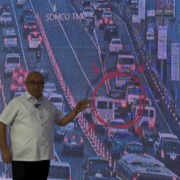Like building Lego in the age of ‘AI slop’

John Oliver’s segment on “AI slop” from “Last Week Tonight” made me laugh out loud, but it also hit close to home. The term artificial intelligence (AI) slop started as technical jargon but now refers to the flood of AI-generated images, videos, and headlines that saturate our social media feeds. They are polished on the surface but empty at the core. AI slop is the email spam of our generative AI era.
A more hopeful story comes from the world of math. For decades, researchers have puzzled over the Hadwiger-Nelson problem in combinatorial geometry, which asks how many colors are needed to paint the plane so that no two points at a unit distance share the same color. The problem sat dormant until a recent breakthrough. In 2024, two new colorings were discovered—not by AI alone, nor by humans alone, but through collaboration. Mathematicians worked with AI to solve this longstanding problem.
Like high-level math, accounting, law, and fintech, are all technical fields. But creativity has its place in this space. Solving problems requires insight and imaginative thinking. There’s joy in seeing solutions emerge from gray areas. That kind of creativity, while satisfying, feeds only the mind.
Feeding the soul is something else. It’s not just about solving but also about expressing. There’s a difference between crafting a persuasive argument versus writing something that speaks to your inner self. In one, the goal is professional competence. In the other, it’s the joy found in the simple act of creating something fun for yourself.
This tension reminds me of a quote from “Dead Poets Society.” Robin Williams, as professor Keating, tells his students: “We don’t read and write poetry because it’s cute. We read and write poetry because we are members of the human race. Medicine, law, business, and engineering, these are noble pursuits and necessary to sustain life. But poetry, beauty, romance, love, these are what we stay alive for.”
That’s why I started a quiet YouTube project using Google’s Veo3, its latest video and audio generation model, called “Mickey and Pooh Have a Conversation.” The two characters sit beside each other and talk about nature. Mickey asks a question. Pooh responds with a line that both a child and an adult can appreciate. In one scene, they talk about rain. Mickey wonders: “Does the rain fall because the sky is sad?” Pooh responds: “I don’t think so. I think the clouds are just shedding their weight.” In another, Mickey observes: “Blue must be Earth’s favorite color. The sky wears it all day and never seems to grow tired of it.” Pooh gently corrects him: “The opposite, really. Blue spreads because the sky won’t let it in.”
AI is like a box of Lego for adults. Even if you don’t have a blueprint, that won’t stop you from building. Some creations are silly, while others are strange. But at least they’re yours. And there are family and friends who will appreciate the honesty in that.
This isn’t just play or something therapeutic. There’s research being done on this. Haase and Pokutta’s paper on human-AI co-creativity describes four levels. At Level 1, AI is a pen. At Level 2, it’s a task specialist. At Level 3, it becomes an assistant. At Level 4, it can be a cocreator. The authors point out that the math case study earlier falls between Levels 3 and 4. My own project falls between Levels 2 and 3. The AI helps with proofreading and generates the video and audio. But the concepts are mine. The AI model would not have known that I am fond of the Calvin and Hobbes comics or that I watched Knowledge Channel’s rebroadcast of “Inquiring Minds.” Those who grew up in the ‘90s will likely recognize the inspiration.
In John Oliver’s segment, he skewered the absurdity of AI slop. One YouTuber had even turned it into a business, offering paid seminars on how to pump out viral videos using AI tools. The goal shifts toward profit, often at the expense of storytelling. And platforms reward it. Facebook, Instagram, and TikTok each tweak their algorithms to push what sticks, regardless of meaning.
AI as pen, specialist, assistant, and cocreator is already here. But it matters how we use it. While platforms push content that chases views, we don’t have to follow that script. We now hold the adult equivalent of a Lego set. Even if only one person enjoys what we make, that can be enough. In a world obsessed with millions of views, there is power in creating for an audience of one, or just a few. To stop the spread of AI slop, let’s remember the quiet joy of building with Lego bricks.
—————-
Leo Ernesto Thomas G. Romero is a CPA-lawyer for a publicly listed company, focusing on corporate and tax matters. He is pursuing a Master’s in Fintech under the MMU-AIM Pioneer Cohort of 2025 and was recently named a finalist for Fintech Lawyer of the Year at the 2025 ALB SE Asia Law Awards.

















Is the specter of 9/11 rising again?